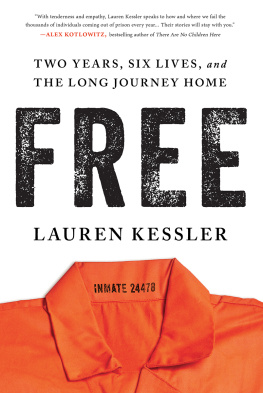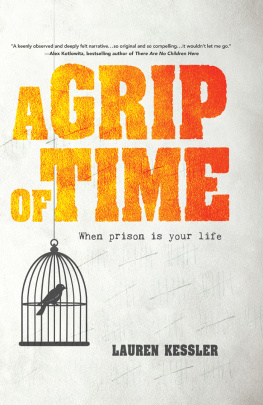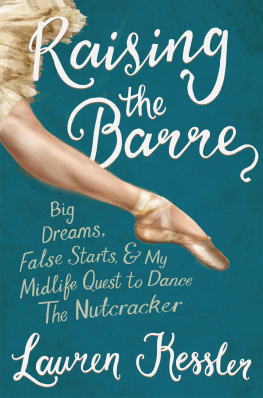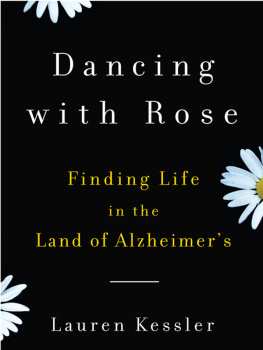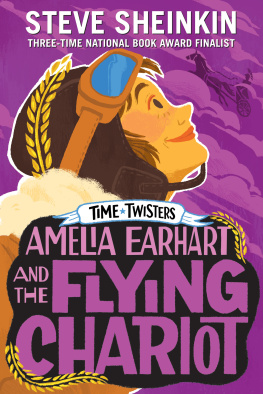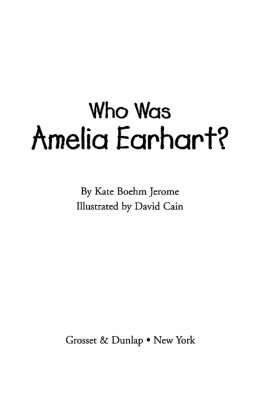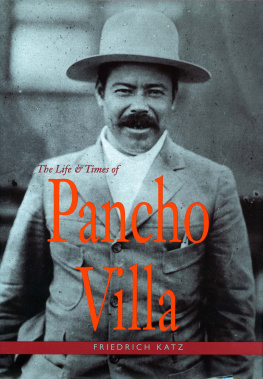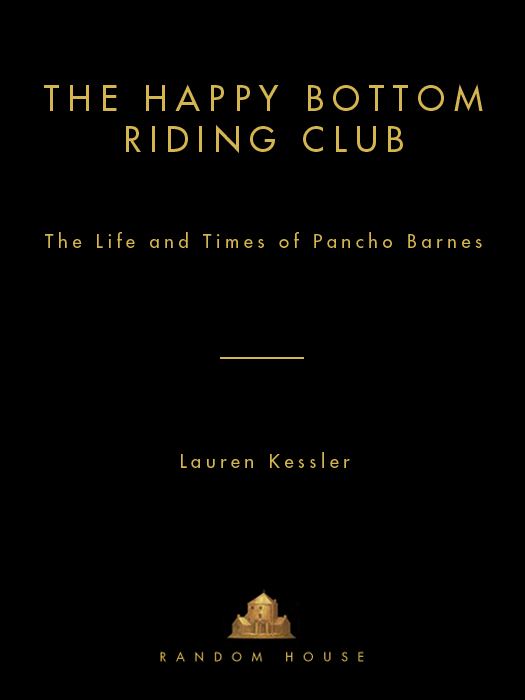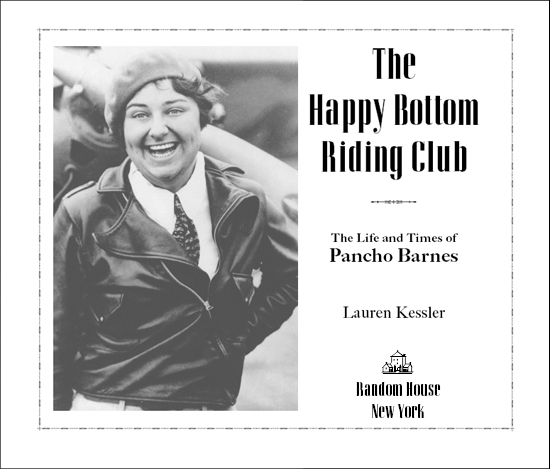Also by Lauren Kessler
Full Court Press
Stubborn Twig
After All These Years
When Words Collide
Copyright 2000 by Lauren Kessler
All rights reserved under International and Pan-American Copyright Conventions. Published in the United States by Random House, Inc., New York, and simultaneously in Canada by Random House of Canada Limited, Toronto.
R ANDOM H OUSE and colophon are registered trademarks of Random House, Inc.
Library of Congress Cataloging-in-Publication Data
Kessler, Lauren
The happy bottom riding club : the life and times of Pancho Barnes / Lauren Kessler.
p. cm.
eISBN: 978-0-307-76964-0
1. Barnes, Pancho, 190175. 2. Women air pilotsUnited States Biography. I. Title.
TL540.B325K47 2000
629.132092dc21
[B] 99-39911
Random House website address: www.atrandom.com
Title-page photo: Pancho Barnes, c. 1930. Air Force Flight Test Center History Office, Edwards AFB Collection
v3.1
To
Don Hager
and, as always,
to Tom
Its so acceptably easy for a woman not to strive too hard, not to be too adventure-crazed, not to take too many risks, not to enjoy sex with full candor. It isnt seemly for a woman to have that much zest.
Diane Ackerman, On Extended Wings
Ah, hell. We had more fun in a week than those weenies had in a lifetime.
Pancho Barnes
Acknowledgments
All books, I think, are beholden to the kindness of strangers. I am always amazed by this, amazed and delighted that so many strangers can be so generous with their time and themselves. This book would not have been possible without the help, interest, and encouragement of many people. Chief among them are Ray Puffer, historian at the Air Force Flight Test Center History Office, Edwards Air Force Base, my first and most enduring contact, who, from the very beginning, was kind, patient, knowledgeable, and good-humored; Jon Aldrich, antique plane enthusiast and collector, who not only gave me access to several boxes of Panchos private papers but set me up in a room in his house to do my research; Tony King, a delightful man and wonderful storyteller who started working for Pancho in the late 1930s and talked to me for hours about the woman he clearly adored; Walt Geisen, a friend of Panchos in her later life, who was as generous with his collection of tapes, private papers, and memorabilia as he was with his own time; and Carolyn Garner of the Pasadena Public Library, who helped me get my feet on the ground.
At the Air Force Flight Test Center History Office, Jim Young steered me to important material and gave up a corner of his big desk for me, and Cheryl Gumm paved the way for several important interviews. Also at Edwards, a few buildings away, Kathy Davis took the time to drive me out to Panchos house in Boron; Linda Stowe answered questions and provided contacts; and archaeologists Rick Norwood and Barbie Stevenson Getchell made it easy for me to use the enormously valuable oral history projects completed under their supervision. Much of that work was done by interviewers Robert Mulcahy and Dana Kilanowski, to whom I also owe a big debt.
Screenwriter David Chisholm generously lent me an important taped interview and shared his insights into a story he knows well. Helen Ashford popped into my life on e-mail and proceeded to spend hours going through Southern California photo archives for me. Doug Keeney provided important and provocative leads. I must also acknowledge the help of Claude Hopkins and Mary Ellen Kennedy at the National Archives and Records Administration, San Bruno, California; Tania Rizzo at the Pasadena Historical Society; Phyllis Ashworth at the International Womens Air and Space Museum; Darla Bullard at the Ninety-Nines; Orit Renee Toulson at the Montgomery County, Pennsylvania, Orphans Court; Joy Werlink at the Washington State Historical Society; Larry Grooms, editor of the Antelope Valley Press; Dr. Peggy Baty, president of Women in Aviation, International; Bobbi Roe, editor of Woman Pilot magazine; and the folks at the History and Genealogy Department of the Los Angeles Public Library.
Many people generously sat for oral history interviews with me, in person and by phone. Without their stories, this one would not have been possible. I thank Carl Bergman, Richard Bortner, Bob Fetters, Mary Graham Fetters, Everet Forten, Helen Fulmer-Steager, George Griffith, Alfred Houser, Joseph McKinstray, Bob Logan, Grace Logan, Richard McKendry, Barney Oldfield, Rob Pollack, Pierre Poudevigne, Boardman C. Reid, Nancy Simonian, Otto Tronowsky, Bobbi Trout, Margorie Urick, Ray Urick, Elinor Wagner, Phyllis Walker, John Weld, Fay Gillis Wells, Dorothy Woodsand especially, as previously mentioned, Tony King and Walt Geisen.
My many faithful correspondents were no less helpful. I thank Jim Bardin, Larry Burden, Tom Collins, D. Russell Crounse, Bruce Fraites, Richard Frey, Shirley Gillespie, Rob Hackman, General J. Stanley Holtoner, Betty J. Love, Luis Marin, Robert McDougle, Walt Neikamp, Jack Pollack, Lloyd Sims, Martin Snyder, Mary Swan, and Ray Young.
And those were just the strangers.
I must acknowledge my agent, Sandy Dijkstra, for being her wonderful, powerful self, as much a force of nature as Pancho ever was. I want to thank my editor at Random House, Bob Loomis, the master of his art, who is both kind and keen-eyed, a tough critic and a perfect gentleman. I know how fortunate I am to work with him.
Closer to home, I thank Dorothy Schick for lifting me off this earth in her Cessna Skyhawk and for sharing her books and her enthusiasm. I thank Carol Ann Bassett, Tom Wheeler, and Duncan McDonald for their encouragement and support. I thank Nancy Webber, Kellee Weinhold, Elizabeth Balder, and Rosemarie Eisenberg for getting me through the hard part.
And I thank, with head and heart, my husband, friend, and collaborator, Tom Hager, who spent long days in county courthouses and basement archives doing research for this book and even more days at home caring for the kids while I did the research, who edited the manuscript with the enthusiasm of a spouse and the sharp pencil of the fine editor and writer he is, who talked me through countless rough spots, literary and otherwise, who was, quite simply and quite wonderfully, always there.
Contents

Part One
High and Mighty
Part Two
Desert Bloom
Part Three
Ratlands
Prologue
Pancho needed to be persuaded. She was sitting in Walt and June Geisens kitchen in Lancaster, California, a desert town two hours northeast of Los Angeles, drinking coffee and considering Walts invitation. Pancho had been famous, but that was long ago. She had once owned a thirty-five-room mansion and a sprawling oceanfront estate and a 360-acre desert oasis. She had once owned Cadillacs and racehorses, cabin cruisers and airplanes. But now, in the winter of 1970, she was just an old woman living alone in a one-room shanty with her dozens of Yorkies and Chihuahuas.
When she got tired of her own company, she drove to the local post office or over to the county clerks, stood at the counter, and talked to whoever would listen. Lately shed been driving into Lancaster to stop by Walt and Junes. Two or three times a week shed show up at their door just before dinner and then act surprised when June asked her to stay for a meal. She was in some ways a pitiful figure, alone and broke and, if not looking for handouts, then certainly looking for company. But it was hard for Walt and June to feel sorry for Pancho, because once she sat down at the table and started talking, she was transformed. She told big, brawling, wonderful stories about the old days, stories about Hollywood before color, before sound, stories about the Air Force before it was the Air Force, about people she had flown with and partied with and gotten drunk with, heroes and generals and millionaires and stars, people Walt and June had only read about. So the Geisens didnt feel they were doing Pancho a favor by giving her a free meal. They felt she was doing them a favor by sharing her past.


